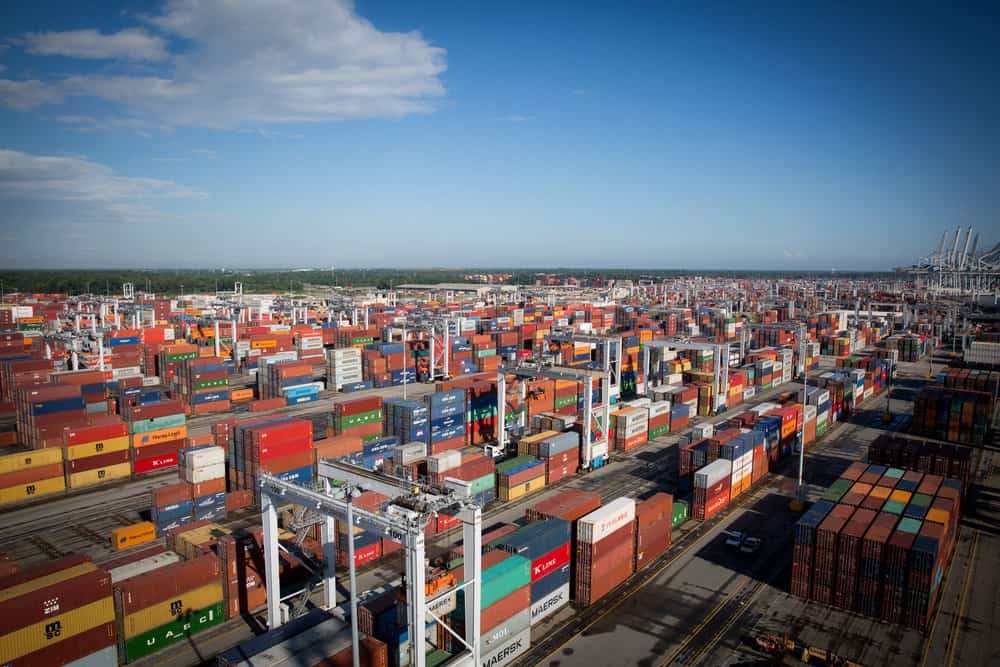
Ocean carriers ease back capacity as import volumes slow down, but industry still expected to be set fair for 2019.
A strong year for container imports into the U.S. is ending as peak season ebbs and trade uncertainty weighs on shipper sentiment. Ocean carriers are responding by cutting back North American ship capacity in anticipation of the slowdown in a move to keep a usually volatile and oversupplied industry on an even keel next year.
The Georgia Ports Authority was among the first to see the slowdown. Despite reporting an overall record year for 2018, the fourth largest port saw loaded container imports for November hitting 169,159 twenty-foot equivalent unit (teus), the lowest level since May and an 18 percent drop from the record level seen in October.
The figures jibe with the National Retail Federation’s latest assessment that October container volumes coming into the U.S. reached 2.04 million teu, the highest monthly total in the 18 years the group has been tracking box imports.
But it’s now downhill from there. The NRF expects November volumes of 2.01 million teus, while December is expected reach to 1.85 million teus.
Those estimates would still represent year-on-year growth in trade volumes. But 2019 will start off with declines, the NRF said.
January is set for a 2.1 percent drop to 1.72 million teus and February will drop 1 percent to 1.67 million teus.
Even as the U.S. has promised to delay the start of higher tariffs on $200 billion in Chinese goods, the uncertainties surrounding trade are one reason for the slowdown, says Ben Hackett of Hackett Associates, which compiles the NRF data.
The result is “no import growth in the first half of 2019 compared with the same period in 2018,” Hackett said.
Deutsche Bank equity researchers say the next months will mark a “negative inflection in freight flows following tariff-related pull-forward, opening the door for an ‘air pocket’ in demand” during the first quarter.
Container ship research firm Alphaliner says the rush to beat the one-time tariff deadline resulted in trans-Pacific container volumes growing 12 percent in October to 1.46 million teus.
The Paris-based consultancy says that trans-Pacific container volumes into the U.S. are “expected to come in even stronger” through the remainder of the year, thanks to shippers’ fears over tariffs and additional ship capacity added on the trans-Pacific.
In spite of “the exceptionally buoyant cargo volumes, signs are already starting to emerge that the resilience will not last,” it added.
Alphaliner says major shipping lines added some 177,000 teus of capacity in the trans-Pacific trade since mid-October through a combination of extra ships and bigger vessels.
But carriers are pulling that capacity. Alphaliner says the CMA CGM-led OCEAN Alliance withdrew four trans-Pacific sailings from its schedule this month. Separately, THE Alliance, which comprises Japan’s Ocean Network Express and Germany’s Hapag-Lloyd (Xetra: HLAG), plan to halt two sailings on the same route.
Likewise, Maersk (Nasdaq OMX: MAERB) plans to switch two of its largest ships, with 17,000-teu of capacity, from the trans-Pacific trade lane to the Asia-Europe trade lane this month. The result will be a 10 percent drop in weekly capacity between Asia and the U.S. West Coast, according to ComPort, the vessel tracking service of PR News Service.
In spite of the anticipated slowdown in demand, container shipping rates remain well above last year’s levels. The Freightos Baltic Index for China to the U.S. West Coast, available on SONAR under FBX.CNAW, still remains at more than double the level seen last year.

The near-term outlook for rates also appears strong, according to Kim Cockrell, who heads sales and marketing at container rate platform New York Shipping Exchange. She says January rates show a “tick upward” versus December. But the gains are expected to moderate in February due to China’s national holidays.
Going into 2019, the industry appears to be better positioned, according to a report from Moody’s Investors Services. It says the container sector is stabilizing thanks to new ship supply expected to only add 5 percent to current capacity.
“if risks do not materialize or impact is less severe than expected, 2019 has potential to be a strong year for container shipping owing to limited supply,” Moody’s said.










